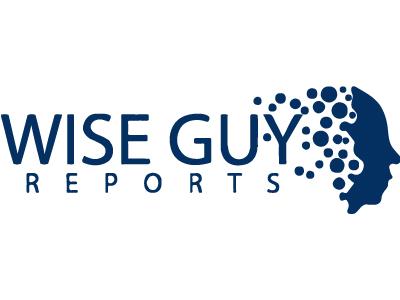Gigabit Media Converters Market Overview:
The gigabit media converters market is an essential segment within the broader networking and telecommunications industry. Gigabit media converters play a crucial role in facilitating the seamless transmission of data between different types of network media, such as fiber optic and copper cables. These devices allow organizations to upgrade their existing networks to support higher data rates without the need for a complete infrastructure overhaul. As the demand for faster and more reliable network connectivity continues to rise, the gigabit media converters market is poised for significant growth. Recent market research indicates that the Gigabit Media Converters Market Industry is expected to grow from 22.8(USD Billion) in 2024 to 30.6 (USD Billion) by 2032. The gigabit media converters Market CAGR (growth rate) is expected to be around 3.75% during the forecast period (2024 - 2032). This growth can be attributed to the increasing adoption of high-speed internet, the expansion of data centers, and the growing need for efficient and reliable networking solutions across various sectors, including telecommunications, healthcare, and education.
Get a sample PDF of the report at –
https://www.wiseguyreports.com/sample-request?id=546883
Competitive Analysis:
The competitive landscape of the gigabit media converters market is characterized by the presence of several key players that are actively developing innovative solutions to meet the growing demand for high-speed connectivity. Major companies such as TP-Link Technologies, Netgear, D-Link Corporation, and Cisco Systems are leading the market with their extensive portfolios of gigabit media converters. These organizations invest heavily in research and development (R&D) to enhance the performance, reliability, and ease of use of their products, catering to the diverse needs of various industries.Strategic partnerships and collaborations are common among industry players, allowing companies to leverage each other’s strengths and expand their market presence. For instance, collaborations between media converter manufacturers and telecommunications service providers facilitate the development of integrated solutions that enhance network connectivity and performance. Additionally, mergers and acquisitions are prevalent as companies seek to consolidate their market positions and enhance their technological capabilities, ensuring they remain competitive in an increasingly dynamic environment.
Market Drivers:
Several key drivers are propelling the growth of the gigabit media converters market. One of the primary drivers is the increasing demand for high-speed internet connectivity. As consumers and businesses alike seek faster internet speeds to support activities such as streaming, online gaming, and remote work, the need for efficient networking solutions becomes paramount. Gigabit media converters enable organizations to upgrade their existing networks to support gigabit speeds, allowing them to meet the growing demands of their users.Another significant driver is the expansion of data centers and cloud computing services. As the volume of data generated by organizations continues to grow, data centers require robust networking solutions that can handle high data rates and provide reliable performance. Gigabit media converters are essential for ensuring seamless connectivity between different types of network media within data centers, enabling efficient data transmission and enhancing overall performance.Moreover, the growing adoption of Internet of Things (IoT) devices is contributing to market growth. IoT devices often require reliable and high-speed connectivity to function effectively, and gigabit media converters provide the necessary infrastructure to support these devices. As more organizations integrate IoT technology into their operations, the demand for gigabit media converters is expected to rise.
Market Restraints:
Despite the positive outlook for the gigabit media converters market, certain restraints could hinder its growth. One primary challenge is the competition from alternative networking solutions. While gigabit media converters offer specific advantages, other technologies, such as switches and routers, can also provide connectivity solutions for high-speed networks. This competition may limit the market share of gigabit media converters in certain sectors, particularly in environments where integrated solutions are preferred.Additionally, the complexity of installation and configuration can pose challenges for organizations. Many businesses may struggle to effectively deploy and configure gigabit media converters, leading to inefficiencies and potential operational disruptions. To overcome these challenges, organizations may need to invest in training and support, which can add to the overall cost of implementation.Furthermore, fluctuations in raw material prices can impact the overall production costs of gigabit media converters. Manufacturers rely on specific components, such as semiconductors and connectors, whose prices can vary significantly due to market conditions. These fluctuations can affect profit margins and pricing strategies for companies operating in the gigabit media converters market.
Segment Analysis:
The gigabit media converters market can be segmented based on type, application, and end-user. In terms of type, the market includes standalone media converters, rack-mounted media converters, and industrial media converters. Standalone media converters are commonly used in smaller networking environments, while rack-mounted converters are suitable for larger installations requiring multiple connections. Industrial media converters are designed for harsh environments, providing enhanced durability and reliability.From an application perspective, the market encompasses various sectors, including telecommunications, data centers, government, healthcare, and education. The telecommunications sector is witnessing significant growth due to the increasing demand for high-speed internet connectivity and the need for efficient network infrastructure. The healthcare sector is also experiencing growth, driven by the adoption of electronic health records and telemedicine solutions that require reliable connectivity.In terms of end-users, the market serves both commercial and residential segments. Commercial users include enterprises, telecommunications providers, and government agencies, while residential users encompass households seeking reliable home networking solutions.
Browse a Full Report –
https://www.wiseguyreports.com/reports/gigabit-media-converters-market
Regional Analysis:
Geographically, the gigabit media converters market is segmented into North America, Europe, Asia-Pacific, Latin America, and the Middle East & Africa. North America currently dominates the market, driven by the presence of major technology companies and a strong emphasis on innovation in networking solutions. The United States is a key contributor to market growth, with significant investments in telecommunications infrastructure and cloud computing services.Europe is also witnessing significant growth in the gigabit media converters market, fueled by the increasing demand for high-speed connectivity and the adoption of digital transformation strategies. Countries such as Germany, the United Kingdom, and France are at the forefront of this growth, with various initiatives aimed at enhancing connectivity and data transmission capabilities.The Asia-Pacific region is expected to exhibit the highest growth rate during the forecast period. Rapid urbanization, coupled with increasing disposable incomes and a growing number of connected devices, is driving the demand for gigabit media converters in countries like China, India, and Japan. Additionally, government initiatives to promote digital infrastructure and smart city projects are further contributing to market growth in this region.
The gigabit media converters market is poised for substantial growth, driven by the increasing demand for high-speed internet connectivity, the expansion of data centers, and the growing adoption of IoT devices. While challenges such as competition from alternative networking solutions and installation complexities exist, the overall outlook remains positive. Companies operating in this market must focus on innovation and strategic partnerships to remain competitive and meet the evolving needs of consumers and businesses. As technology continues to advance and the demand for efficient and reliable networking solutions grows, the gigabit media converters market is set to play a crucial role in enhancing connectivity and facilitating the digital transformation across various industries.
About US:
Wise Guy Reports is pleased to introduce itself as a leading provider of insightful market research solutions that adapt to the ever-changing demands of businesses around the globe. By offering comprehensive market intelligence, our company enables corporate organizations to make informed choices, drive growth, and stay ahead in competitive markets.
We have a team of experts who blend industry knowledge and cutting-edge research methodologies to provide excellent insights across various sectors. Whether exploring new market opportunities, appraising consumer behavior, or evaluating competitive landscapes, we offer bespoke research solutions for your specific objectives.
At Wise Guy Reports, accuracy, reliability, and timeliness are our main priorities when preparing our deliverables. We want our clients to have information that can be used to act upon their strategic initiatives. We, therefore, aim to be your trustworthy partner within dynamic business settings through excellence and innovation.
Contact:
WISEGUY RESEARCH CONSULTANTS PVT LTD
Office No. 528, Amanora Chambers Pune - 411028
Maharashtra, India 411028
Sales: +91 20 6912 2998

